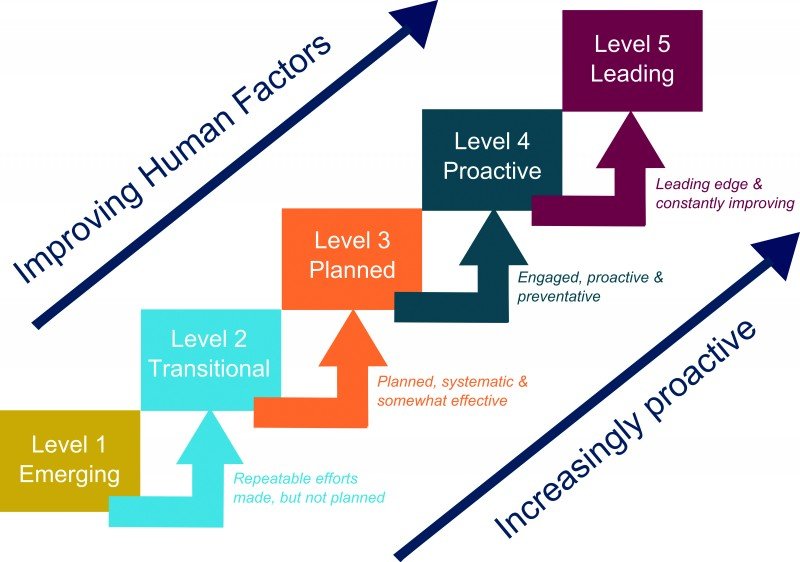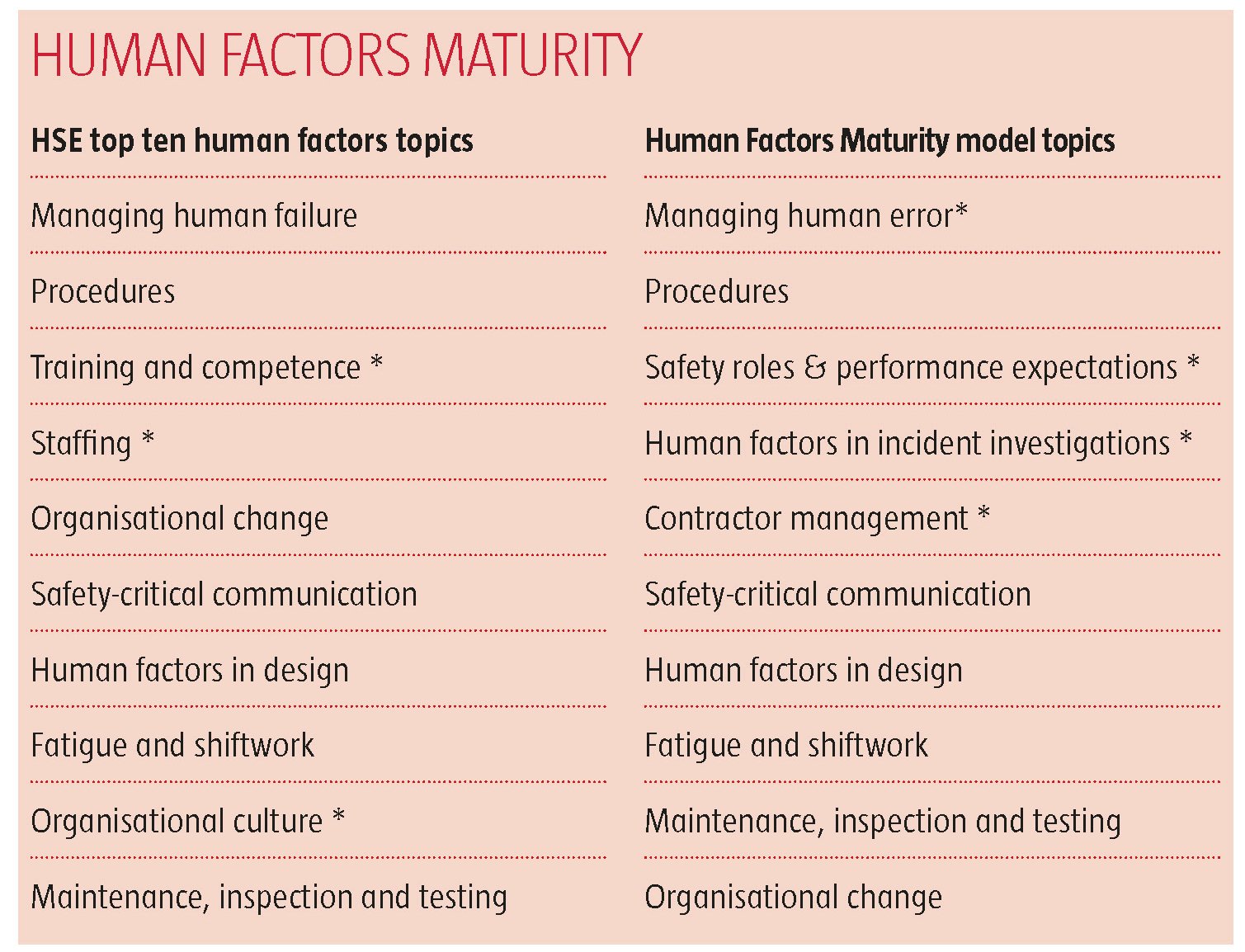 The Keil Centre has developed a card-sort method to measure Human Factors Maturity, which it argues will help businesses build support, understanding and commitment for human factors integration. Johnny Mitchell explains.
The Keil Centre has developed a card-sort method to measure Human Factors Maturity, which it argues will help businesses build support, understanding and commitment for human factors integration. Johnny Mitchell explains.
When a client asked me if there were any effective methods available to measure how well they could integrate human factors into their business activities, and which would identify any gaps, I replied, “probably”. The client, who in recent years had worked hard to develop their safety culture, had decided to embark on a journey to improve their current human factors capability. They wanted to identify their current strengths and weaknesses.
Human factors can be described as all the things that impact on human performance in the workplace. The discipline is concerned with understanding and improving the interaction between people and complex systems. Through understanding the way they currently integrate and apply human factors, companies can help reduce the likelihood of human error and violations, which are consistently identified as key contributory causes in incidents (e.g. Texas City, Buncefield, Piper Alpha).

Figure 1: The Keil Centre’s Human Factors Maturity® model
As there are numerous ways to measure safety culture and specific human factor topics such as staffing levels and workload, I assumed there must be a good organisational measure of human factors integration available. After looking more closely, I wasn’t convinced there was.
After completing some initial research and holding discussions with my colleagues I was directed to a model that Glasgow-based health and safety consultants Nickelby HFE proposed to HSE in 2002. Presented in a paper entitled Framework for assessing human factor capability, the five-level model differs from current hierarchical models of safety culture (e.g. the safety culture maturity model; Hudson’s evolutionary model) in that the different levels of capability are based on following best practice, planning, procedures, processes and feedback rather than principally focusing on behaviours or attitudes.
At lower levels, human factors provision is typified by an ad-hoc approach that is not planned and has no set policies or procedures. At higher levels, best practice approaches are applied in a planned and systematic way and are monitored for impact. There are benefits in adopting a five-level model like this to measure Human Factors Maturity as it offers a common terminology, is simple to understand and helps build awareness of what each human factor topic ‘looks like’ at each level.
Each level of the Keil Centre’s Human Factors Maturity® model (see figure 1) represents a level of maturity from emerging to leading. In order to be of practical use, the model needed to be widened to incorporate specific human factors topics and an associated methodology for effectively measuring Human Factors Maturity. The requirement was for a clear and uncomplicated list of human factors topics that, when measured, would highlight clear guidance on the strengths and areas to develop at an organisational level.
In determining the human factors topics that should be included in the model used for the Keil Centre’s Human Factors Maturity® model, we started by considering the ten key topics that HSE has previously identified. These are outlined in table 1 and many also consist of sub-topics. For instance, managing human failure is broken into the sub-topics of ‘managing human error’ and ‘human factors in incident investigations’.
For the purposes of the model that the Keil Centre developed, we discarded topics that were already covered in the client’s current measure of safety culture (e.g. training and organisational culture) and also replaced topics based on a consideration of organisational needs and other available research (e.g. reviews of human factors in major incidents).

Table 1: Comparing the HSE top 10 human factors topics and the Human Factors Maturity® model topics (*topics that have been revised)
The ten topics that were eventually identified for inclusion are highlighted in table 1 opposite. There were additional topics developed that could be substituted in for other organisations, thereby making the tool flexible to the needs of the client.
The next step was to develop a method that would be effective in measuring Human Factors Maturity. A card-sort method was utilised for this process where experienced company personnel are asked to review five statements (written on cards) and select the statement that best reflects their organisation’s level of Human Factors Maturity for each topic. Each statement reflects a level of Human Factors Maturity ranging from level 1 (‘emerging’) to level 5 (‘leading’).
A facilitated discussion is then held to identify why the group chose the level of maturity they did, how to improve and highlight priorities. An action plan is subsequently developed to help the company develop its capability in the chosen human factors topics. The Keil Centre has used this ‘card-sort’ method for many years when assessing safety culture maturity.
There are some differences, however, in the way the Human Factors Maturity workshop is employed. For instance, it is not necessary to survey a large representative sample of the workforce, rather a core selection of those with the required knowledge of human factors practices in the company. This is because Human Factors Maturity is less about perception and more about what is physically in place in terms of procedures and best practice.
The Keil Centre believes that this model presents an excellent opportunity for organisations to baseline how mature they are in managing human factors topics and pinpointing where to focus their future efforts. Furthermore, this assessment can be used to build support, understanding and commitment from managers towards improving human factors integration. I
t also represents an opportunity for organisations who are tackling human factors to benchmark against companies in their industry and communicate about human factors topics using common terminology. We intend to support this model through research and the gathering of normative data over the next year.
Johnny Mitchell works as a registered occupational psychologist at the Keil Centre in Edinburgh
The Safety Conversation Podcast: Listen now!
The Safety Conversation with SHP (previously the Safety and Health Podcast) aims to bring you the latest news, insights and legislation updates in the form of interviews, discussions and panel debates from leading figures within the profession.
Find us on Apple Podcasts, Spotify and Google Podcasts, subscribe and join the conversation today!




